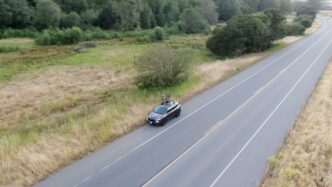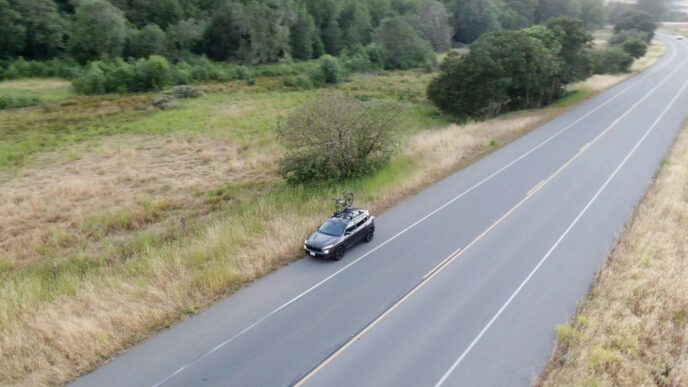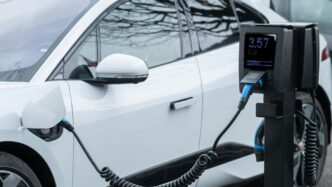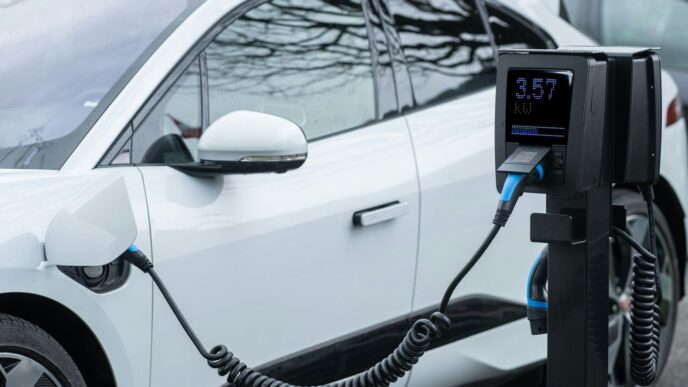The Current State of Autonomous Vehicles in India
When we talk about self-driving cars in India, it’s still pretty early days. Think of it like a seedling rather than a fully grown tree. Most of the buzz you hear about autonomous tech is happening in places like the US and China, where companies are really pushing the limits. Here in India, we’re mostly seeing advanced driver-assistance systems (ADAS) making their way into newer cars. These aren’t fully self-driving, mind you, but they help out with things like keeping you in your lane or braking automatically. It’s a good start, but it’s a far cry from cars that can handle everything on their own.
Nascent Adoption and Infrastructure Challenges
The biggest hurdles right now are the roads themselves and the general setup. Our traffic is, well, let’s just say ‘dynamic’. It’s a mix of cars, bikes, pedestrians, and sometimes even animals, all sharing the same space. This kind of unpredictable environment is tough for any self-driving system to figure out. Plus, the road infrastructure isn’t always up to par. Think potholes, unclear lane markings, and inconsistent signage. These things make it really hard for sensors and AI to get a clear picture of what’s going on. It’s going to take a lot of work to get our roads ready for cars that don’t need a human driver.
Focus on ADAS and Controlled Environments
Because of these challenges, the focus for now is on what’s called ADAS. These are systems that assist the driver, not replace them. Features like adaptive cruise control, automatic emergency braking, and lane-keeping assist are becoming more common. You’ll also see some autonomous tech being tested in very specific, controlled places. Think of dedicated campuses, large industrial areas, or maybe even shuttle services within a specific, well-mapped zone. These controlled environments allow developers to test and refine the technology without the chaos of public roads.
Untapped Potential in Developing Nations
Even though India is facing these challenges, the potential for autonomous vehicles here, and in other developing nations, is huge. Imagine how self-driving technology could help improve public transport, make deliveries more efficient, or even provide mobility for people who can’t drive. The need is definitely there. The question is how we can adapt the technology to work with our unique conditions and build the necessary infrastructure and regulations to make it a reality.
Technological Foundations of Autonomous Driving
Autonomous vehicles aren’t just about fancy sensors; they’re built on some pretty complex tech. Think of it like building a house – you need a solid foundation before you can even think about the paint color. For self-driving cars, this foundation is a mix of hardware, software, and smart algorithms working together.
Sensor Fusion and AI Integration
These cars need to ‘see’ and ‘understand’ the world around them, and they do this using a bunch of different sensors. We’re talking cameras, radar, and LiDAR (that spinning thing that uses lasers). Each sensor has its strengths and weaknesses. Cameras are great for reading signs, but struggle in bad weather. Radar can see through fog, but isn’t as good at identifying objects. LiDAR gives a really detailed 3D picture, but can be pricey.
Sensor fusion is the process of taking all the data from these different sensors and combining it into one coherent picture. It’s like putting together a puzzle where each piece comes from a different source. This is where Artificial Intelligence (AI), especially machine learning, really shines. AI algorithms learn from vast amounts of data to interpret what the fused sensor information means – is that a pedestrian, a cyclist, or just a shadow? The smarter the AI, the better the car can predict what’s happening and make safe decisions.
Advancements in LiDAR and Computing Power
LiDAR used to be incredibly expensive, like tens of thousands of dollars per unit. But guess what? The cost has dropped dramatically, now often under a hundred bucks for some types. This makes it much more feasible for everyday cars. At the same time, the technology itself is getting better, offering higher resolution and longer ranges.
Parallel to this, the ‘brains’ of the car – the computing power – has also seen huge leaps. We’re talking about specialized chips, like GPUs and AI accelerators, that can process all that sensor data and run complex AI models in real-time. This is often called ‘edge computing’ because the processing happens right there on the vehicle, not in some distant data center. It’s essential for quick reactions.
The Role of High-Definition Mapping
While sensors and AI help the car understand its immediate surroundings, High-Definition (HD) maps provide a crucial layer of context. These aren’t your average GPS maps. HD maps are incredibly detailed, down to the centimeter level, showing lane markings, road boundaries, traffic signs, and even the height of curbs. They act like a pre-existing blueprint of the road.
Here’s how they fit in:
- Localization: The car uses its sensors to figure out exactly where it is on the HD map. This is way more precise than standard GPS.
- Prediction: The map can tell the car what to expect around the next bend – like a sharp curve or a junction – even before the sensors can fully see it.
- Redundancy: If a sensor is temporarily blinded by glare or bad weather, the HD map can provide backup information to help the car stay on track.
Think of it this way: sensors are the car’s eyes and ears, AI is its brain, and HD maps are its memory and foresight. All these pieces need to work together perfectly for autonomous driving to be safe and reliable.
Navigating the Regulatory Landscape for Autonomous Vehicles India
Driver-Centric Legislation and Its Limitations
Right now, India’s laws are built around the idea that a human is always in control of the car. The Motor Vehicles Act of 1988, for instance, clearly states that vehicles must be driven and maintained so a driver can effectively manage them. It even has rules about not letting anything block the driver’s view or ability to steer. Plus, there are regulations from 2017 that specifically tell drivers not to watch videos or use handheld devices while driving, except for navigation. This whole framework just doesn’t account for a car driving itself. The absence of a driver isn’t really covered. It makes things complicated because many self-driving systems use AI and apps that might need a driver to switch them on or off. These features could easily distract a driver, taking their attention away from the road. And if something goes wrong, the law can hold both the driver and the manufacturer responsible if the vehicle isn’t up to safety standards.
The Need for Specialized Autonomous Vehicle Laws
Because our current laws are so driver-focused, we really need new rules specifically for autonomous vehicles (AVs). These new laws need to think about how AVs work, what happens when they’re in charge, and who’s responsible when things go wrong. It’s not just about updating old rules; it’s about creating a whole new playbook. We need clear guidelines on testing AVs, how they should operate, and what safety features are mandatory. This includes things like:
- Defining Levels of Automation: Clearly outlining what each level of autonomy means in practice and what the legal requirements are for each.
- Data Recording and Access: Establishing rules for how AVs record data (like a black box) and who can access it, especially after an incident.
- Cybersecurity Standards: Setting strict cybersecurity requirements to protect AVs from hacking and unauthorized access.
- Testing and Deployment Permits: Creating a system for approving AV testing and deployment, possibly with geographical limitations.
International Regulatory Frameworks and Local Adaptations
Looking at what other countries are doing is smart. Many nations are already working on AV regulations. For example, the UNECE WP.29 regulations are pretty influential, especially in Europe, Japan, and Korea. Rules like R155 for cybersecurity and R156 for software updates are becoming standard for new vehicles. The US has its own approach with FMVSS, focusing more on voluntary safety self-assessments. China is also moving fast with its own standards for autonomous driving and data. While we can learn a lot from these international frameworks, India will need to adapt them to our specific roads, traffic conditions, and legal system. Simply copying rules won’t work; we need a framework that fits India’s unique environment. This means considering our diverse road users, infrastructure quirks, and the specific challenges our traffic presents. It’s a balancing act between adopting global best practices and creating rules that are practical and effective for India.
Addressing Ethical Dilemmas in Autonomous Mobility

So, we’ve talked about the tech and the rules, but what about the really sticky stuff? The ethical questions surrounding self-driving cars are pretty complex, and honestly, they keep a lot of people up at night. It’s not just about whether the car can see the road; it’s about what the car does when the road gets complicated.
The Trolley Problem and Moral Responsibility
You’ve probably heard of the "trolley problem." It’s that classic thought experiment: a runaway trolley is headed for five people, but you can pull a lever to divert it onto another track where it will kill just one person. Do you pull the lever? Now, imagine that decision has to be made by a car’s computer. What happens when an autonomous vehicle faces an unavoidable accident, and it has to choose between two bad outcomes? Does it prioritize the passengers inside, or pedestrians outside? Does it swerve to avoid a child, potentially putting its occupants at risk? These aren’t easy questions, and assigning moral responsibility when an AI makes a life-or-death call is a huge challenge. It’s not like a human driver who can be blamed for a split-second panic; the AI’s decision is programmed.
Ensuring Fairness and Preventing Misuse
Beyond crash scenarios, there are other ethical concerns. How do we make sure these systems are fair and don’t have built-in biases? For instance, if facial recognition is used to identify passengers or pedestrians, could it be less accurate for certain groups? That’s a big problem. Then there’s the worry about misuse. Could these advanced vehicles be hacked or used for nefarious purposes, like carrying out attacks? We need to build these systems with safeguards from the ground up to prevent them from being turned into tools for harm.
Global and Indian Initiatives on AI Ethics
This isn’t just a problem for India; it’s a global conversation. Organizations like UNESCO have put out recommendations on AI ethics, and many countries are looking at how to regulate this. In India, there’s work being done too. The government has been looking at standards for assessing fairness in AI systems and discussing responsible AI practices, especially for things like facial recognition. It shows that people are thinking about these issues, but finding practical solutions that work for everyone is still a work in progress. It’s a bit like trying to write the rules for a game that’s still being invented.
The Liability Conundrum in Autonomous Vehicle Accidents
So, you’ve got these fancy self-driving cars zipping around, and it’s pretty cool, right? But then, something goes wrong. An accident happens. And suddenly, everyone’s asking, "Who’s to blame?" It’s not as simple as pointing a finger at the driver anymore, because, well, there might not even be a human driver in control.
Identifying Responsibility: Manufacturer, Operator, or Software?
This is the big question. If an autonomous vehicle (AV) causes a crash, who pays? Is it the company that built the car? Maybe the software engineers who wrote the code? Or perhaps the person who was supposed to be supervising the car, even if they weren’t actively driving? It’s a real head-scratcher. Think about it: the car’s computer system is making decisions based on its programming. If that programming has a flaw, or if the sensors don’t pick something up correctly, that’s a problem with the car’s design or its AI. But what if the human "driver" wasn’t paying attention when they should have been? That’s a whole different ballgame.
Lessons from Early Autonomous Vehicle Incidents
We’ve already seen some incidents that highlight this mess. Remember that tragic case a few years back where a pedestrian was hit by an AV? The car’s system didn’t quite know what it was seeing – first it thought the person was a vehicle, then an unknown object, then a bicycle. By the time it figured things out, it was too late. The system was designed not to brake hard unless the human operator took over, but the operator was distracted. So, was it the car’s fault for not reacting better, or the human’s fault for not being ready to step in? These early events show us just how complicated assigning blame can get. It’s not just about a single mistake; it’s about a chain of events involving technology and human oversight.
The Evolving Insurance Landscape
Because of all this confusion, the insurance world is having to rethink things. Traditionally, car insurance is all about the driver. But with AVs, the "driver" might be a computer. Some places are starting to say that if an AV is insured, the insurance company should cover the damages. If it’s not insured, then the owner might be on the hook. This is a big shift. We’re also seeing discussions about how much fault the person who got hurt might share – that’s called contributory negligence. It’s a whole new puzzle for insurers, and they’re working hard to figure out how to cover these new kinds of risks without going broke. It’s a tricky balance, trying to make sure people are protected while also encouraging companies to keep developing this new tech.
Market Trends and Future Trajectories for Autonomous Vehicles
Things are really starting to shift in the world of self-driving cars. We’re seeing a clear move away from just basic driver assistance and towards more advanced automation. Most car companies are aiming for Level 3 systems, where the car can handle most driving tasks under certain conditions, but the driver still needs to be ready to take over. Meanwhile, companies focused on robotaxis are already testing out Level 4 systems in specific areas, like designated city zones. It’s a big step, and it means the cars themselves are changing a lot.
Transition Towards Higher Levels of Automation
This isn’t just about fancy features anymore. The industry is pushing towards vehicles that can truly drive themselves in more situations. Think about it: Level 3 allows for hands-off driving on highways, and Level 4 means the car can handle everything within a defined operational design domain, like a specific city or route. This gradual climb up the automation ladder is what’s driving a lot of the innovation we’re seeing today.
The Rise of Software-Defined Vehicles
Cars are becoming less about mechanical parts and more about the software running them. Instead of having lots of small computer chips scattered around, we’re seeing a trend towards central computing platforms. These powerful systems manage everything, making the car more like a smartphone on wheels. This shift is super important because it makes it easier to update features, improve performance, and even add new capabilities over time through software updates.
Edge AI and Cybersecurity by Design
To make these advanced systems work, cars need to process a ton of information really fast, right there on the vehicle itself – that’s where ‘Edge AI’ comes in. It means using specialized chips to handle tasks like understanding what the sensors are seeing without needing to send all the data to the cloud. But with all this connectivity and data processing, security is a massive concern. Cybersecurity isn’t an afterthought anymore; it’s being built into the car’s design from the very beginning. This includes protecting against hacking, ensuring the integrity of sensor data, and securing the software updates that keep the car running smoothly and safely.
Here’s a quick look at how different regions are approaching this:
| Region/Country | Key Focus Areas |
|---|---|
| United States | L3+ testing, commercial robotaxi pilots |
| China | Smart city integration, local tech development |
| Germany | L4 legislation, compliance with international standards |
| Japan | Rural mobility applications |
| India & Southeast Asia | ADAS, controlled environment trials |
It’s a complex puzzle, but the pieces are starting to fit together, pointing towards a future where cars are much smarter and more capable than they are today.
Paving the Way for Autonomous Vehicles in India
So, how do we actually get self-driving cars rolling on Indian roads? It’s not just about the tech working perfectly, though that’s a big part of it. We need some serious groundwork laid out. Think of it like building a house – you can’t just put up the walls without a solid foundation and proper blueprints.
Legislative Reforms for Driverless Technology
Right now, our laws are pretty much built around the idea of a human driver being in control at all times. The Motor Vehicles Act of 1988, for instance, is all about ensuring the driver has effective control. This is a bit of a snag when you’re talking about cars that don’t have a driver. We need new rules, ones that actually consider what an autonomous vehicle is and how it operates. It’s not just a minor tweak; it’s a whole new ballgame. We’re talking about defining what constitutes a ‘driver’ in the context of AI, and figuring out who’s responsible when something goes wrong – is it the car maker, the software developer, or maybe the company that owns the fleet?
- Defining legal frameworks for different levels of automation (SAE Levels 1-5).
- Establishing clear lines of liability in case of accidents involving AVs.
- Creating guidelines for testing and deployment of autonomous technology on public roads.
Infrastructure Development and Urban Planning
Beyond the laws, our roads and cities need to be ready. Imagine a self-driving car trying to navigate potholes, unclear lane markings, or unpredictable pedestrian behavior. It’s a recipe for disaster. We need smarter infrastructure. This means better road markings, more reliable connectivity (like 5G), and maybe even dedicated lanes or zones for AV testing and operation. Urban planners will have to think about how AVs fit into the bigger picture – how they’ll affect traffic flow, parking, and public transport. It’s a complex puzzle.
Building Trust and Public Acceptance
Let’s be honest, most people are still a bit freaked out by the idea of a car driving itself. We’ve all seen those news stories, right? To get AVs accepted, we need to show people they’re safe and reliable. This involves a lot of public education, transparent testing, and making sure the technology actually works as advertised. Demonstrating a strong safety record through rigorous testing and transparent data sharing will be key to winning over public confidence. It’s about building trust, one mile at a time. If people don’t feel safe, the best technology in the world won’t get very far.
The Road Ahead for Autonomous Vehicles in India
So, where does all this leave us regarding self-driving cars in India? It’s clear the technology is moving fast, and the potential benefits are huge, especially for a country like ours dealing with traffic and pollution. But we’re not quite there yet. We’ve seen how other countries are pushing ahead, but India faces its own set of hurdles, mostly around infrastructure and, importantly, the laws. Our current rules are built around human drivers, and that’s a big gap to bridge. Figuring out who’s responsible when something goes wrong is another massive question mark. It’s going to take a lot of work, new laws, and careful planning to get autonomous vehicles safely and fairly integrated into our daily lives. It’s a journey, for sure, and one that needs us to get the legal and practical groundwork right before we can truly see these vehicles on our roads in a big way.












